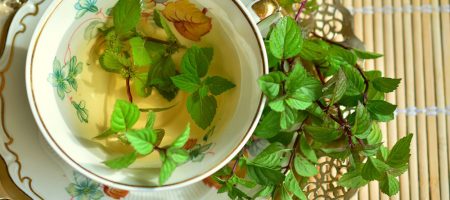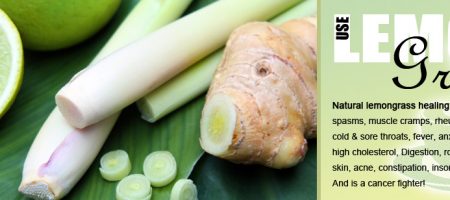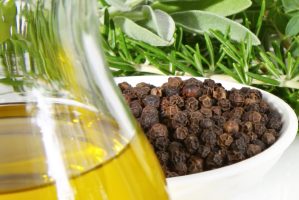Winter Wild Edibles
 Now that winter is upon us, many plants are settling down or dying altogether. There are very few signs of green life, unless it belongs to a pine tree or a privet bush. So then, how do the wild animals survive, such as the birds? What sort of foods do they eat? Very good questions! Today, we will discuss 5 different wild edibles known to survive in the cold winters of Oklahoma. But we will not only discuss the edible plants, but the medicinal plants too.
Now that winter is upon us, many plants are settling down or dying altogether. There are very few signs of green life, unless it belongs to a pine tree or a privet bush. So then, how do the wild animals survive, such as the birds? What sort of foods do they eat? Very good questions! Today, we will discuss 5 different wild edibles known to survive in the cold winters of Oklahoma. But we will not only discuss the edible plants, but the medicinal plants too.

Chickweed likes to grow in moist soil with good drainage in a nice shady place. It does not like intense heat like other plants. You can find these growing late into winter in some states like Florida, or coming out early in Oklahoma. The Chickweed is a ground-covering kind of plant. The stems can grow to be about a foot long. The leaves are small, round, and pointed at the tip. If they resemble something like Mickey-Mouse’s ear, it could be a poisonous look-a- like. The leaves are also smooth, and not fuzzy. Chickweed does have one line of hair growing on the stem. If any other parts of the plant are fuzzy or hairy, it is not Chickweed. When you snip off a stem, there should be no milky sap. If there is, leave it alone. Chickweed does not, and should not have a whitish milky sap coming from the inside of its stem. The flowers are very small, with five white notched petals. Chickweed can be eaten fresh or cooked. Chickweed can also be chopped up (it is a stringy plant) and added to soups, salads, or eaten as a winter survival food.
Wild Onion is another amazing winter wild edible. It goes great in soups and other dishes such as salads and stews. You can usually find the Wild Onion growing yearlong in Oklahoma’ mountainous regions, but this depends on your location. During the spring, the Wild Onion comes out with pink/purplish flowers that grow at the top of the plant in a large cluster. They have about 6 petals on each flower. During summer and fall these flowers dry up into seed heads. During winter the only thing you can see of this onion is the green stalks. It resembles Green Onion which you can buy 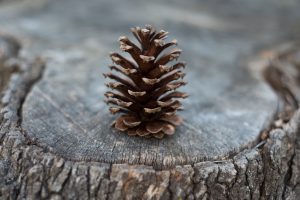 fresh at the market. However, if caught in a survival situation, this is the closest thing to an onion during winter in the wild. The bulbs are the best part and add great flavor to soups and stews as I mentioned above.
fresh at the market. However, if caught in a survival situation, this is the closest thing to an onion during winter in the wild. The bulbs are the best part and add great flavor to soups and stews as I mentioned above.
Hickory, Pecans, and Acorns! All of these trees are edible and essential when it comes to searching for food in the cold winter. It’ll be hard to 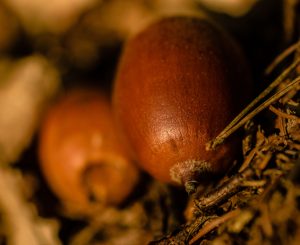 identify the trees by the bark when all the leaves are gone, so it’s best to just pay good attention to the ground. Pecans are oval shaped, brown, with black embroidery –looking markings on the tip. They are not extremely difficult to open, especially the paper-shell ones, but you will need a good rock. They are covered in a small brown/dark green looking shell, with a brown shell underneath. Acorns vary in many different ways, but here is something to remember. The smaller the crown is, the less bitter the meat is! Hickory nuts may resemble a walnut on the outside and on the inside, but they don’t taste anything like a walnut. In fact, a lot of people don’t prefer a hickory as it is so difficult to open and eat. However, it is a good emergency food, and there are other things you can do with the tree. If you collect the extract from the bark and boil it down to syrup, you end up with a smoky flavored maple syrup! This syrup helps with breathing issues; good to keep in mind!
identify the trees by the bark when all the leaves are gone, so it’s best to just pay good attention to the ground. Pecans are oval shaped, brown, with black embroidery –looking markings on the tip. They are not extremely difficult to open, especially the paper-shell ones, but you will need a good rock. They are covered in a small brown/dark green looking shell, with a brown shell underneath. Acorns vary in many different ways, but here is something to remember. The smaller the crown is, the less bitter the meat is! Hickory nuts may resemble a walnut on the outside and on the inside, but they don’t taste anything like a walnut. In fact, a lot of people don’t prefer a hickory as it is so difficult to open and eat. However, it is a good emergency food, and there are other things you can do with the tree. If you collect the extract from the bark and boil it down to syrup, you end up with a smoky flavored maple syrup! This syrup helps with breathing issues; good to keep in mind!
The Pine Tree is an evergreen tree worth mentioning, as the pine needles have a source of vitamin C, which is useful during the winter. The Pine Tree is rather easy to spot, as it grows to a very large height. They grow throughout the mountainous regions of Oklahoma, Texas, and many other states. The bark resembles brickwork, but this depends on the variety you have. The sap often seeps through the bark in large and small amounts. Collect the sap for torches and fire starter kits. The pine

Sugarberry’s cousin the Hackberry
tree wood, sap, and bark are very flammable, so take caution. The sap can also be used as glue, or a Band-Aid. The needles of the Pine Tree can be eaten raw, boiled in water to make pine tea, or used to get a fire going. The inner bark of the pine tree can also be eaten as an energy source; however, it is not very good!
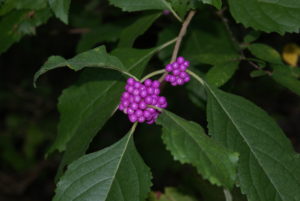
Berries; unfortunately berries are hard to find during the winter, and that is because the birds usually get to them first. Sometimes however, you may find a spot not yet raided by the flying rodents. Some berries to look for are the Buckthorns berries, Beautyberries, and fruits such as persimmons. Persimmons can hold out long into winter, and are rather easy to find if the fruit is still on them. The fruit is usually a bright orange color, and they often grow nearby water sources. So if you find a persimmon that means water is close-by! Avoid eating the seeds as it can cause inflammation; this side-effect is especially painful for smaller animals such as small dogs. Another tree not commonly mentioned is the Sugarberry. The Sugarberry is known to be resistant to Witches Broom, a tree killer, and often has berries all over the tree that usually survive late into winter. The berries are quite healthy, and delicious. Another method to use them is to turn them into Sugarberry “milk”.


